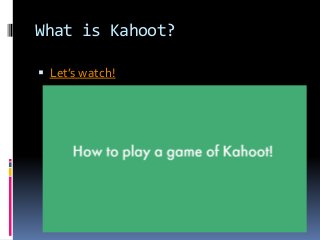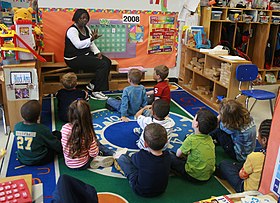
The education levels in a state can be assessed using a dataset. This dataset is available online and allows users to look at various metrics about education levels in a state. This data can be used to determine the education attainment of non-native and native residents. This information is useful for determining the state's readiness to prepare its citizens for future jobs.
Higher education levels for immigrants than natives are lower than those of natives
Although most natives have some degree of education, the educational level of many immigrants is far lower. Some immigrants, such as those from the Philippines, may have only high school or none at all. This may be a benefit for some jobs as immigrants might have better manual skills. Language skills are another advantage that immigrants have, and may make them more competitive within certain industries.

In Poland, a study found that immigrants from Eastern Europe and the Soviet Union had lower education levels than their native counterparts. Immigrants from the MENA area had the greatest educational gaps. There were more than two years of difference between those who completed school and those who didn't.
Overall, immigrants with foreign degrees had lower educational attainment that natives. These immigrants were also less likely complete a bachelor’s degree or more. Additionally, immigrants of first generation were less likely than native-born parents to earn a college degree.
They have to compete with foreign workers in order to find jobs
The United States' labor force is in crisis, especially for those with higher education. Over the past three decades, the demand for skilled workers has grown dramatically, but the supply has not kept pace. Employers who offer high wages, but cannot find qualified workers in their country are frustrated by this situation. Employers find it difficult to hire qualified workers at home, so they seek out foreign workers.
They have lower home ownership rates
Over the past decade, the share of homeowners with less than a high school education has declined by 30 percent. This trend is driven primarily by economic factors. The US population has grown more unevenly and there are fewer high-paying jobs. Housing prices are also rising. This has led to many homeowners with no high school education being priced out the housing market. Many homeowners were also victims to predatory lending.

The importance of education attainment and homeownership is increasing. In 1990, the gap was only 15 percent. Today, it is 28 percent. Homeownership can also be affected by higher incomes. The homeownership rate for the lowest-income brackets is 40 percent lower than that of those in the highest income brackets.
FAQ
What is homeschooling?
Homeschooling allows children to be educated at their own home by their parents. It is also known by the names private education or self-education.
Family members who want to teach their children at home can opt for homeschooling. This method allows them to receive a quality education without leaving the comfort of their own home.
The parents educate their children from birth to high school. They decide on the subjects they want to study and how much time each subject should take. The student learns everything on his/her own time.
It is up to parents when they want to teach their children. Many schools recommend that children enroll in classes between the ages four and twelve. Some families wait until their children reach kindergarten to start teaching them.
You can use any number resources to help your children through the curriculum. You can learn valuable lessons from books, videos, websites and magazines.
Many families find homeschooling a great fit for their busy schedules. Children can be spent more time at home than in traditional public schools.
What is a "Trade School"?
People who are not able to succeed at traditional higher education institutions can earn a degree through trade schools. They offer career-focused programs which prepare students to pursue specific careers. These programs require students to complete two years of coursework in one semester. After that, they enter a paid apprenticeship program in which they acquire a job skill and get on-the-job training. Trade schools can include technical schools, community colleges and junior colleges as well as universities. Some trade schools also offer associate programs.
What's the difference between college and school?
Schools are often divided into classes or grades, with one teacher teaching a class of students. Colleges are larger institutions that offer more specialized programs and include many university-level courses. The majority of schools focus on core subjects, while colleges offer more specialized programs. Both levels have a curriculum that prepares students for higher education.
How can I get scholarships?
Scholarships can be granted to help cover college expenses. There are many types available in scholarships. These scholarships include:
-
Federal Grants
-
State Grants
-
Student Loans
-
Work Study Programs
-
Financial Aid
Federal grants are direct from the U.S. government. Federal grants generally require that applicants meet certain criteria. You will need to prove financial need.
Each state offers state grants. These funds are offered by individual states based on financial need. Others offer money for specific purposes.
Banks and other lending institutions issue student loans. Students usually borrow money to cover tuition and living costs.
Employers should be encouraged to use work-study programs to help them hire qualified students. Employers must pay their employees at least the minimum wage.
Financial aid allows low-income families to afford college by paying for all or part of their tuition costs.
How long should you spend on college preparation?
The time that you intend to spend studying for college is a function of how much you want to spend on it. Start taking college preparation courses as soon as you finish high school if you want to be able to go straight to college. However, if you have plans to wait several years before starting college planning, then you don't necessarily need to do so until later.
Discuss your plans with your teachers and parents. They might recommend certain courses. Be sure to keep track of the courses you've taken and the grades you received. You'll be able to see exactly what you need next year.
How long does a teacher of early childhood take?
The four-year process to earn a bachelor's level in early child education takes. Two years will be spent taking the general education courses required of most universities.
After finishing your undergraduate degree, you'll usually be accepted into graduate school. This step allows one to specialize in a certain area of study.
One example is to choose to specialize in child psychology or learning difficulties. You must apply for a teacher preparation program after you have completed your master's degree.
This process will take another few years. You will have the opportunity to work with professionals in order to acquire real-world knowledge.
You will also need to pass state exams in order to become a teacher.
This process takes several years, which means you won't be able to immediately jump right into the workforce.
What does early childhood education mean?
Early Childhood Education is a profession that aims to help children become happy, healthy adults. This includes teaching children how to read and preparing them for kindergarten.
Early childhood education is designed to help children grow and learn by providing them with appropriate experiences.
Early childhood educators often have to assess each child's developmental needs. This helps to decide if a particular program would benefit each child.
Parents also have the opportunity to meet teachers and other professionals who are familiar with working with young children in early childhood programs.
The role of parents is equally important in the early childhood education. They must know how to properly care for their children and offer guidance and support when needed.
Parents can also take part in activities that teach skills to their children for the rest of their lives.
Preschool education is sometimes called early childhood education. However, this term can be used interchangeably with daycare centers. Prekindergarten education typically begins around three years, while early childhood education generally starts at three.
Statistics
- In most developed countries, a high proportion of the population (up to 50%) now enters higher education at some time in their lives. (en.wikipedia.org)
- Globally, in 2008, around 89% of children aged six to twelve were enrolled in primary education, and this proportion was rising. (en.wikipedia.org)
- Think of the rhetorical power of nineteenth-century abolitionist Harriet Beecher Stowe, Martin Luther King, Jr., or Occupy Wall Street activists with their rallying cry of “we are the 99 percent.” (bostonreview.net)
- And, within ten years of graduation, 44.1 percent of 1993 humanities graduates had written to public officials, compared to 30.1 percent of STEM majors. (bostonreview.net)
- They are more likely to graduate high school (25%) and finish college (116%). (habitatbroward.org)
External Links
How To
How to enroll in homeschooling
Homeschooling is the process of educating children at home, which includes teaching them subjects through different methods such as reading books, watching videos, doing exercises, listening to music, etc. Because they allow students to learn at their pace and develop skills like problem solving, creativity and self-discipline as well communication and social skills.
Many parents want to educate their kids at home. Homeschooling is an option that allows parents to focus their efforts on their children's education and not have to worry about how to find someone to care for them.
There are many benefits associated with homeschooling; some of these include developing the ability to think critically and creatively, increasing their knowledge base, improving their language skills, developing their personal identity, becoming independent learners, and having greater control over their life than if they were attending school.
Homeschooling's main purpose is to give children quality education so that they can be successful adults. Before you can start homeschooling, there are some things that you need to do. The first is to find out if your child can attend public or private schools. The type of curriculum that you choose to use for homeschooling is an important consideration. You have many options when it comes to curricula online. These can be customized to suit your needs, budget and level of expertise. These include Waldorf, Montessori and Waldorf as well as Reggio Emilia, Charlotte Mason and unschooling. You must also ensure that you have all the resources necessary to educate your child before you start homeschooling. This means purchasing textbooks, educational materials, computers, electronic devices, toys, games, art supplies, musical instruments, etc. These items may be bought online, or purchased in local stores.
Once you have completed these steps, you can apply to become a homeschooling mom. To do this, contact your state department or education for assistance. They will assist you with filling out forms and provide guidance on how to get started homeschooling.